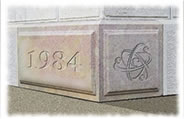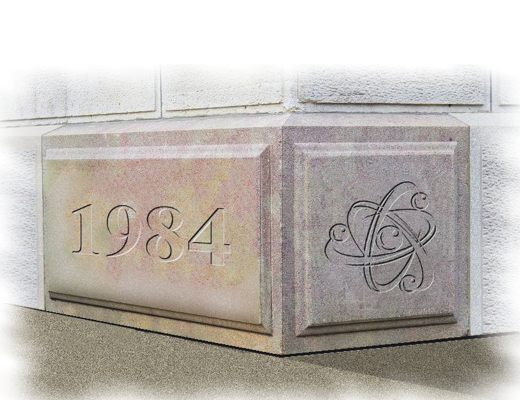Architects, Culture & Anthropology
The Fusion Group …
Built on A Solid Foundation, and Here for You.
By now, you know about the recent passing of Jennifer StJohn. She was not only our founder and CEO, she was our friend. We at The Fusion Group are beyond saddened, but our direction is well-defined.
Jennifer was a great leader and teacher. She was a planner and a visionary. So, although it may sound strange, in a real sense she planned, taught and led The Fusion Group with a vision toward this very day.
We have a clear organizational structure and culture, trainers at home and in the field, support staff with detailed processes, and our President of 35 years, Lucy Lanzar, to oversee it all and serve Fusion’s executive counsel clients.
Rest assured, The Fusion Group remains committed to our mission of helping professionals and organizations develop in the areas of communication, sales, management and strategy. In fact, our resolve is stronger than ever, knowing that Jennifer’s passion and wish would be for the company to make positive impacts, both in the community and for its clients, far into the future.
The foundation laid by Jennifer StJohn is solid. The Fusion Group team is dedicated to the organization’s purposes. We remain here to serve you, as always, in every way.
Sincerely,
The Fusion Group – Each one of us.
Architects, Culture and Anthropology
“The leader sends a Letter to the Future in the form of the culture he builds today.”
— J. R. StJohn
American Author, Consultant, Executive Counselor
An organization is many things of course, but most of all it is a composite of agreements, practices, standards, habits and style; all of which serve as explicit, but all too often implicit, guides to behavior — “What will play here?” and “What won’t?!”
Every decision a leader takes ultimately puts the “stamp of culture” on the firm. A single decision may not turn the rudder enough to throw things permanently off course, but the accumulated “Sense of the Decisions” (or the lack thereof…) sends a “Letter to the Future” in the form of “Cultural Architecture,” which remains in place long after an individual leader has departed.
Anthropology
In a sense, as employees, each of us is – or must become – a “Cultural Anthropologist,” attempting to decode the combined physical, literary, anecdotal and practical evidence and reach conclusions revealing what this place is about: What kind of people work here? What is it like to be a part of this group, family, culture, team, business unit or undisciplined assemblage of outlaw cutthroats? Is it about serving the customer, or profiteering at their expense? Is it about underpaying the staff and overpaying the executives? Is it about defeating the world and reigning supreme? Is it about solving the business/economic problem and moving the ball forward for all concerned? Is it about getting the senior guy on Gulfstream’s Private Client list? Is it about serving the client first, then about our company, then about us as individuals?
Until you know the answers to these questions, every move is fraught with disaster. Will you betray an ethical impulse, and open yourself to ridicule as a soft touch? Will you suggest “Fleecing these Sheep” and insult the ethics of a lofty and thoughtful leadership team?
What’s it about? How can you tell?
Clues/Codes
Well, there are indications… As an employee, you have to discover them and interpret their combined meaning which will reveal “The Tao” or “Way” of this corporation. For example:
1. Does the firm have pet names for clients? “Muppets, Marks, Jerks, As*&%##@, Targets” or simply, “Clients?” There is a cultural clue in there somewhere, look hard!
2. Is there an explicit ethical premise? “Clients First, Last and Always! No Matter What?” or “Simply Do What’s Best, for all concerned.”
3. How do they view and handle authority? Does “Authority” mean “Power or Rank?” Or, does “Authority” mean — the person capable of writing the Book? Do we duck and cover around Authority here? Do we feel free to disagree? Or do we routinely challenge and grow through the give and take?
4. Are they honest/good golfers? Will they “Call a Penalty” on themselves and score fairly even when out of view? Or do they cheat on the scorecard and their expense accounts? Can they hit it where they intend? It’s one thing to be honest, another to be honest and good!
5. Do they help each other? Or compete for keeps? Do they look out for one another’s families? Or do they view families as “Entanglements?”
6. Do they “Dis” the competition? Or take quiet notice as they work at improving their own performance?
7. Are they Clear and Just in the large things; and the small? Or do they ignore the small stuff — because it’s beneath them? Is there one ethic for business, another for home and yet another for Vegas? So, who are they, really?
8. Is there an accepted “Work vs. Life” balance? Is it instead “WorkLife?” Is it “WORK!” or “Working in order to provide the money to LIVE?” Perhaps “LIVE NOW! and Devil take later…” Don’t book your vacation until you figure this one out.
9. Time… Is there only “Next Week?” Or is there an awareness and continuity between the last decade, now and the future? An organization without a memory is doomed to ignore the lessons of history.
10. What exactly constitutes the asset base? Is it AUM? Or perhaps, the net assets of the firm? Is it the employee pool? Does behavior line up with the stated position?
Writing that Letter…
The historical take on corporate culture is that it’s something slightly beyond reach, as ethereal, mythical and difficult to interpret as Greek. “Greek” also suggests that becoming part of a corporation is a little like pledging a Fraternity or Sorority — also as exclusive, secretive and perhaps exclusionary… But what if it doesn’t have to be that way?
What if you — as a management team — are “writing a letter to your own future” right now, while you’re all still here in the building? We suggest that with every decision, move, story, strategy and judgment call, you are indeed doing just that — leaving a cultural, geological and architectural account of just who, what and how you are — and just who, what and how the people who come after should be. How about doing it By Design instead of By Default? Decide the “Who, What and How” — the Cultural Code of your lives. Then write it down — in the architecture, the office layout, the manuals, the by-laws, the management practices, the small customs, the annual gatherings, the standards of practice — and of course; the Annual Report!
Don’t bury it in a cave. Deliver It to the next generation both in practice, and in print while you’re here! Right now. Live it! Demonstrate it — while you can still interpret it for them and clear up any misunderstandings. When they’ve got it, you’re done. You can move on in peace. And they won’t require a “dig” to discover what it’s all about.
Applications
Personally
Probably the best thing about “writing” such a letter, is that it requires you to get clear about what you believe, what you stand for and with whom you stand. We all operate from beliefs, standards and deep values — but if we haven’t been forced to express them, they remain just that — deep — and often, inscrutable.
At Home
Implicit is one thing; Explicit is something else again. “Who are we now — today?” is a question we might all benefit by asking and answering both of ourselves and of our mates, children and family members. If you can force a minute between the Facebook references; begin the conversation about what makes us special as individuals and family members, so everyone can buy-in to the same cultural reference points. If I know who We are, I know who I am. If I know who I am, I can look more carefully for someone to love; and so on…
At Work
It was here before you arrived; and it’ll probably outlast you. Hence, easy to let yourself off the “Culture Building” hook. Don’t do it. In your department, you’re the boss. Culture is your responsibility. Make your code clear, and each new teammate will go to work faster, sooner and more effectively — and they’ll pass along the favor to the next one.
If you’re granted the exquisite and painful duty of senior leadership; remember that each decision writes another paragraph for the future to decode. Leave them a code key in the form of clear statements about the intentions, the methods and the standards of the firm. Do it explicitly so nobody has to “unearth the manual.”
The future is waiting and wondering. “Write them a Letter.”
We wish you Happy Holidays.
Cornerstones will resume in the New Year.
Subscribe to our Newsletter


